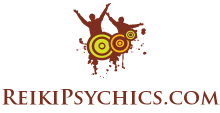Anyone who is interested in the metaphysical and alternative healing has heard of Reiki. The word itself means Universal Love. The practice of Reiki involves the universal healing of humans, animals and the planet. Reiki uses touch as a healing system. This type of healing can also be sent distances as a type of healing as well.
Reiki has been used for centuries for healing. This healing system is now being used as a part of Western medicine. Hospitals are hiring practitioners of Reiki to help with patients. The results are positive.
Reiki is a Japanese practice. It is not mediation. It is not massage. It’s a different type of touch healing that is linked to Japanese culture and Japanese spiritualism.
The Japanese woman who is credited with Reiki’s spread to the west in the late 20th century is Hawayo Takata. Research shows that references have been made to Reiki as far back as the 1880’s. Takata helped spread the word about Reiki’s usage and benefits by creating records to support the practice.
 Reiki has successfully transitioned from a purely Japanese system to popularity in the West. There is a great interest in the United States and Europe. It is a popular method of stress relief and a great resource for energy control.
Reiki has successfully transitioned from a purely Japanese system to popularity in the West. There is a great interest in the United States and Europe. It is a popular method of stress relief and a great resource for energy control.
Reiki is used to direct bodily energy in a way to heal. Reiki practitioners remove anything that can be blocking energy and other things that can prevent the healing process. Reiki can help those who are suffering from pain and chronic disease. Reiki helps by making the body ready for healing. This is because all healing starts from within. Reiki starts with the practitioner placing their hands on the person who is being healed. This is a no pressure touch. This allows the practitioner to manipulate the Ki, life force energy. It is from the Ki that healing flows. The energy then flows through the Chakras in the middle of the hands and then through the tips of the finger.
Reiki can also help animals as well as humans. Animals are naturally open to touch energy. Reiki can also help ease an animal’s passing over. Practitioners of Reiki are guided by visualization to position the one being healed’s energy. Reiki sessions can be as long as an hour or even more. As long as the practitioner feels the energy, the session can continue.
Healing is a process. This process comes from within. Reiki helps guide the energy within a person so that the healing can begin.


While the article provides a comprehensive overview of Reiki, it would be beneficial to see more empirical evidence on its efficacy, particularly in clinical settings. Anecdotal accounts are valuable, but scientific validation is equally important.
The incorporation of Reiki into animal care is a fascinating aspect. Animals’ natural receptiveness to touch energy highlights the universal potential of Reiki beyond human healing.
Reiki’s appeal in stress relief and energy control is noteworthy. It speaks to the broader human need for holistic health practices that address not just the physical but also emotional and spiritual well-being.
It is intriguing to see how Reiki, with its deep roots in Japanese spiritualism, has integrated into Western medicine. The notion of using touch to direct energy for healing purposes raises several questions about the interplay between traditional and modern healthcare practices.
Understanding Reiki’s ability to prepare the body for healing by manipulating the Ki is quite profound. It demonstrates the intricate connection between energy and health, which is not often emphasized in Western medical paradigms.
The historical context provided about Hawayo Takata’s role in spreading Reiki to the West is quite enlightening. It demonstrates how cultural practices can transcend geographical boundaries and find relevance in different societal contexts.